Worst-Case Weather Scenarios
If you find yourself in hazardous situations, nothing helps you more than having a plan
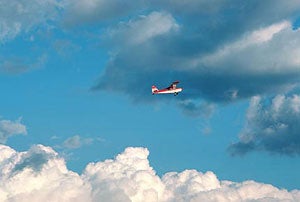 There is absolutely no excuse for beginning or continuing a flight into known hazardous weather---"hazardous" being defined as any weather condition that exceeds the limitations of your pilot ratings and currency and/or those of the airplane as it's certified, equipped, maintained and inspected. Our responsibility as pilots in command is painstakingly clear when it comes to weather planning and flight in adverse conditions. The best of flight planning, however, can sometimes leave a pilot awry when the forecasts don't tell the entire story. Further, bad decision-making often sends pilots blundering into conditions that are over their heads. Yet, records are filled with heroic accounts of pilots who return from the brink, who get the ship back on the ground when the weather strikes. So, should you ever find yourself staring into weather's maw, we present survival strategies for escaping the worst of what the skies dish out.
There is absolutely no excuse for beginning or continuing a flight into known hazardous weather---"hazardous" being defined as any weather condition that exceeds the limitations of your pilot ratings and currency and/or those of the airplane as it's certified, equipped, maintained and inspected. Our responsibility as pilots in command is painstakingly clear when it comes to weather planning and flight in adverse conditions. The best of flight planning, however, can sometimes leave a pilot awry when the forecasts don't tell the entire story. Further, bad decision-making often sends pilots blundering into conditions that are over their heads. Yet, records are filled with heroic accounts of pilots who return from the brink, who get the ship back on the ground when the weather strikes. So, should you ever find yourself staring into weather's maw, we present survival strategies for escaping the worst of what the skies dish out.
These tips are meant for narrowly avoiding the very real possibility of severe injury or death if you encounter hazardous weather---and there's no guarantee that these strategies will change the outcome if you fly too deeply into danger. Never forget that it's your responsibility to avoid hazardous weather and that these strategies should only come into play if you've failed to live up to that responsibility. Remember also that the airplane's Pilot Operating Handbook is the final authority for specific actions to take in case you enter hazardous weather. With all of this in mind, let's see how you can maximize your chances if you find yourself boxed in by hazardous weather.
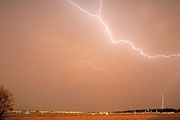 How To Survive A Thunderstorm
How To Survive A Thunderstorm
Powerful and imposing, thunderstorms form as individual cells, often in a single line. Hence, although they may be the longest moments of your life, if you pass through the line nearly perpendicularly, the actual time that you spend inside a storm cell will be relatively short. If you find yourself about to enter a thunderstorm, follow these steps:
⢠Tighten all safety belts and secure loose objects.
⢠Aim for the narrowest part of the cell, as close to the edge of the upwind side of the cloud as possible.
⢠If flying a retractable-gear plane, increase the stability by lowering the landing gear.
⢠Establish turbulent air penetration speed (Va) and trim.
⢠Keep flaps up; lowered flaps reduce the maximum G load that the airplane can withstand.
⢠Turn off an autopilot's altitude hold ("attitude hold" and heading/nav modes are beneficial to keep on).
⢠Fully turn up the cockpit lights and keep your eyes in the cockpit to avoid being blinded by lightning.
⢠Maintain the power setting and attitude; accept altitude and airspeed deviations (tell, don't ask, air traffic control that you need a "block altitude").
⢠Keep the wings level and hold the heading to minimize your time in the storm and to keep the G loading to a minimum.
⢠Land as soon as it's practical after exiting the storm. Have a mechanic thoroughly check the airplane for damage before anyone flies it again.
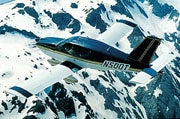 How To Survive Hail
How To Survive Hail
Hail forms in towering cumulus clouds and can be ejected as much as 20 miles from a severe thunderstorm (that's where the admonition to avoid flying between storm cells that are less than 40 miles apart comes from---stay at least 20 miles from any one cell). Should the skies go green and you fly into a shaft of hail, make sure to do the following:
⢠Slow the airplane to reduce impact forces; also, you'll likely encounter wind shear and strong downdrafts.
⢠Protect your face and eyes, just in case hail comes through the windshield (here's a use for Foggles⢠that you've probably never thought about).
⢠Hold the heading to minimize the time spent in the hail.
⢠After entering clear air, carefully test the airplane control at progressively lower air speeds (we suggest doing tests at five-knot increments).
⢠Establish a minimum landing speed using the zero-flaps landing speed or 1.2 times the speed at which you get the very first indication of control difficulty or impending stall, whichever is higher.
⢠Land as soon as it's safe by using your established landing speed. Do not use flaps---extending flaps increases the angle of attack of the horizontal stabilizer, which may also be damaged. Also, the flaps themselves may be damaged.
⢠Call your insurance agent---you're not flying that airplane for a while.
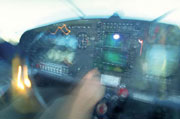 How To Survive Severe Turbulence
How To Survive Severe Turbulence
If you fly into severe or extreme turbulence, including mountain waves, make sure to do the following:
⢠Tighten all safety belts and secure loose objects.
⢠In retractable-gear airplanes, increase the stability by lowering the landing gear.
⢠Establish Va and trim.
⢠Keep flaps up; lowered flaps reduce the maximum G loading that the airplane can withstand.
⢠Turn off an autopilot's altitude hold ("attitude hold" and heading/nav modes are helpful to leave on).
⢠Maintain the power setting and attitude; accept altitude and airspeed deviations (tell, don't ask, air traffic control that you need a "block altitude").
⢠Keep the wings level to hold the G loading to a minimum.
⢠Land as soon as it's practical after leaving the area of turbulence. Have a mechanic thoroughly check the airplane for damage before anyone flies it again.
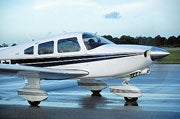 How To Survive Airframe Ice Accumulation
How To Survive Airframe Ice Accumulation
If you're flying an airplane that isn't equipped with de-icing devices and you encounter ice, or if the rate of accumulation is so great that even the constant use of de-icing equipment won't keep the airframe clear, heed the following steps:
⢠Turn all anti-ice and de-icing devices on.
⢠Retract flaps and the landing gear to prevent ice accumulation on them.
⢠Maintain "ice penetration" airspeed; airplanes certified for flight in icing conditions have published speeds producing angles of attack that prevent ice from building on the underside of the wings and fuselage. Without precise POH guidance, maintain your best speed when you're in icing conditions, no less than about 10% above your normal approach speed---you may have to put the airplane in a descent, obstacles permitting, to minimize ice accumulation.
⢠Get out of visible moisture or change to a non-freezing altitude. This may mean climbing (if you're able), descending or turning around to escape.
⢠Aim for the nearest airport with a runway that is longer than about 4,000 feet for single-engine airplanes or 5,000 feet for twins---you'll be landing fast and long, and the runway may be slick, as well.
⢠If you're still accumulating ice while landing, use the power to maintain ice penetration speed until your flare.
⢠If you're not accumulating any additional ice, but your airframe is still contaminated, carefully test the airplane control at progressively lower air speeds (we suggest doing tests at five-knot increments).
⢠Establish a minimum landing speed by using the zero-flaps landing speed or 1.2 times the speed at which you get the very first indication of control difficulty or impending stall, whichever is higher.
⢠Do not extend flaps---flaps increase the horizontal stabilizer's angle of attack and may lead to an unrecoverable tail stall.
⢠In retractable-gear airplanes, delay the gear extension to avoid building ice and do not retract the gear once it's extended in ice---the landing gear may freeze up in the wells.
⢠A go-around or missed approach isn't an option---you're committed to land.
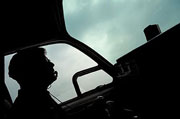 How To Survive Unintended Entry Into Instrument Conditions
How To Survive Unintended Entry Into Instrument Conditions
This is the number-one killer of lightplane pilots---and about half of the cases show that the pilot is instrument-rated! If you find yourself in or about to enter instrument conditions, do the following:
⢠Do not re-trim the airplane---assuming that it was in trim before you entered IMC, it will still be trimmed for your present desired flight condition.
⢠Take your hands off the controls. Use rudders for heading control and only small jabs of the yoke to correct pitch and bank excursions. Use an autopilot if you have one.
⢠Gradually turn 180 degrees to return to clearer skies.
⢠If you're still in IMC, contact air traffic control for help. Use 121.5 if you don't know another frequency.
⢠Change one variable (speed and heading altitude) at a time.
⢠Turn with no more than a 10-degree bank.
⢠With cruise trim, about 400 rpm (fixed-pitch props) or a four-inch manifold pressure equals 500 fpm of descent---just what you need for an ILS approach.
⢠Lowering the retractable landing gear equals about 500 fpm of descent.
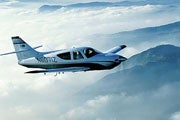 How To Mentally Survive
How To Mentally Survive
In The Worst-Case Scenario Survival Handbook (by Joshua Piven and David Borgenicht, Quirk Publications, 1999), survival instructor "Mountain" Mel Deweese tells us how to "continue to exist, no matter how dire the circumstances." He wisely suggests:
⢠Be prepared---mentally, physically and equipment-wise.
⢠Stay calm and don't panic.
⢠Have a survival plan.
Surviving worst-case weather means having the skills and discipline to avoid hazardous weather in the first place, and the ability and equipment to calmly carry out your pre-planned escape technique in the event that your judgment and skill haven't kept you out of danger.
For more on aeronautical decision making, check out Risk Management, Again, Really?

Subscribe to Our Newsletter
Get the latest Plane & Pilot Magazine stories delivered directly to your inbox






